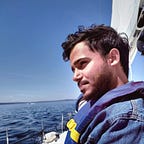Our first co-creation presentation
Would you prefer sitting on a chair for two hours watching beautiful keynote presentation by designers or engaging in activities, actively participating building together in teams?
For our professional product design : Anesthesia machine 2032 presentation, we decided to abandon the traditional approach to present research findings to the client. Instead, we designed engaging activities.
Using co-creation as an active tool to engage stakeholders to get multiple perspectives on your current research. Using these activities as an instrument/ probe to further deepen your research. The ideas you get in the activities are not the final prototypes that you can use for user testing rather building blocks and inspiration to build upon.
However, It depends critically on presentation and engaging tasks to get valuable inputs.
Basic timeline
The host team presented the overview of presentation: the statistics like number patient, hospital, emergency which showed the authenticity of the source. followed by the timeline of research gave a holistic view of the focus areas.
Time division and overview
In the assigned 30 mins time, we divided 15 mins each for presentation and workshop.
Clear division
Starting off with three focus areas e.g patient experience, qualitative information, and emergency scenario we described the concrete research findings in a condensed manner e.g what our goal is, methods we applied, the problems, consequences, and values making it clear for the audience.
Involving right brain
Supporting the information we presented the left wall with real-time interview and visualization
we kicked off the ideation phase with co-creation workshop following our plan of cards on problems, inspiration, and technology
Positive Results
We actively engaged the users in the ideation phase and got results on qualitative information. we learned that adding one more device may give you more information but making the numbers tangible in a world that is constantly bombarded with cognitive overload, is what we should design for.
Neutral Results:
The company did not provide us with any research direction leaving it open for us to decide it. however, we feel that we should choose a direction that adds the most value.
Future plans :
-prototyping on the quality of information
-Asking the nurse to use the lo-fi prototype and building along the way
-Using the feedback as probe/ instrument to further deepen our research
-Zoom in and find out the vertical(focus) from the broad field of research we already have.
.
